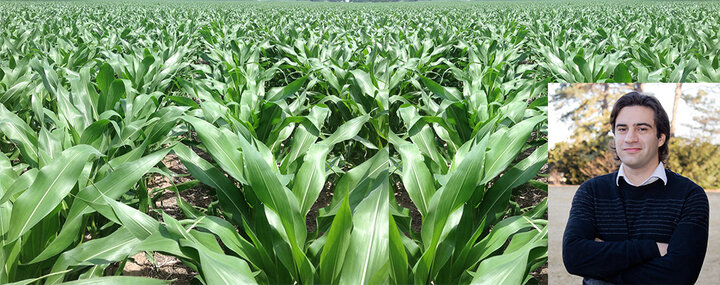
Collecting basic agricultural data from a mere 45 sites can provide enough predictive power to reasonably estimate crop yields within a 10-state swath of the U.S. Corn Belt, says a new study led by the University of Nebraska-Lincoln.
The study compared actual corn production from 2011 through 2014 against best-case projections from a UNL-developed model that accounts for weather, soil properties and planting practices. Those projections covered four spatial scales — county, agricultural district, state and the Corn Belt region — based on data gathered by 10 universities.
Model-based simulations derived from 45 sites within the nearly 600,000-square-mile Corn Belt led to projections that the authors described as “in close agreement” with actual bushel-per-acre yields and overall production. That agreement increased alongside spatial scale, the study reported, with the projections improving when zooming out from county to district to state to region.The model incorporates both historical and recent weather data to help generate a range of possible values for end-of-season yield, said co-author Patricio Grassini, assistant professor of agronomy and horticulture.
“You can use the simulated yield to know if a given year is going to be above, below or near the average (yield),” Grassini said. “What makes this unique is that you don’t really need that many locations to predict what happens at the regional level.
“In previous studies, people have tried to simulate or predict what happens in every single square foot of ground. That becomes ‘Mission: Impossible,’ because there’s no way you can really retrieve high-quality weather data and evaluate estimates at such a fine level of resolution. The beauty of our approach is that you only need 45 locations. By doing it right at those locations, you can upscale to state and regional levels with a lot of confidence.”
Grassini said the team sees its model as a cost- and time-efficient complement to forecasting systems from the U.S. Department of Agriculture and other entities that directly sample crops during the growing season. Taking advantage of both approaches, he said, should eventually lead to more frequent and accurate projections.
The team has already put the model to use, working with state extension specialists across the Midwest to distribute updated, bi-weekly projections throughout the summer in the form of UNL CropWatch articles. It will begin releasing 2016 corn yield projections by mid-July.
Farmers and others in the ag industry are using the projections to help calculate the logistical costs of drying or transporting their grain and inform their marketing decisions, Grassini said. Some also want to know the size of their yield gaps — the difference between their actual and best-case yields – for the sake of improving their field management.
“This is really something that is being used by farmers and the ag industry for making decisions that have an impact on their profit,” Grassini said.
Corn Yield Models in CropWatch
In 2014 and 2015 as researchers tested and evaluated the use of UNL's Hybrid-Maize modeling software to estimate corn yield in the Corn Belt, researchers regularly shared the yield forecasts for selected sites in CropWatch. (See below.) Following these estimates from mid-July to maturity shows how various factors affect yield.
Grassini says they will be sharing forecasted corn yield data for individual sites again this year via CropWatch. Watch for the first story in the series in several weeks and regular yield forecasts beginning in mid-July.
2015 Forecasted Yields as of ...
(45 locations in 10 states)
2014 Forecasted Yields as of ...
(25 locations in 6 states)
The team’s study appeared in the journal Field Crops Research. Grassini authored the study with UNL’s Francisco Morrell, former postdoctoral researcher in agronomy and horticulture; Haishun Yang, associate professor of agronomy and horticulture; Kenneth Cassman, professor emeritus of agronomy and horticulture; Justin Van Wart, former postdoctoral researcher in agronomy and horticulture; and Roger Elmore, Heuermann Chair of agronomy and horticulture. Visiting scholar Gonzalo Dario Rizzo Ayphassorho and postdoctoral researcher Juan Ignacio Rattalino Edreira will contribute to the team's 2016 forecasts.
The UNL team collaborates with researchers from Iowa State University, the University of Minnesota, Kansas State University, the University of Illinois at Urbana-Champaign, Purdue University, Ohio State University, the University of Wisconsin-Madison, South Dakota State University and the University of Missouri.
